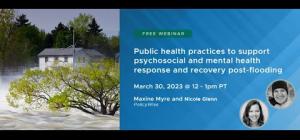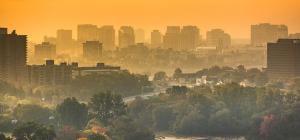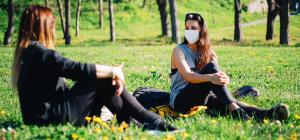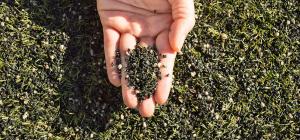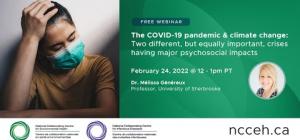
Environmental surface and air sampling in the context of the COVID-19 pandemic

Primary inquiry
Since the COVID-19 outbreak began, many businesses have started offering environmental sampling services to detect presence of SARS-CoV-2 on environmental surfaces and in the air in a variety of settings. This field inquiry describes a scenario in which SARS-CoV-2 RNA was detected via surface sampling in an office setting. While no cases of COVID-19 have been confirmed in the office space or in the same office building, other occupants in the building are wondering about the validity and implications of the sampling result, and whether environmental sampling should be adopted more widely. The following questions will guide the approach used to answer this field inquiry:
- How are environmental surface and air sampling and analyses performed?
- What is the value of environmental sampling in the absence of COVID-19 cases, and in outbreak or case cluster situations?
- What are some important considerations when interpreting environmental sampling results?
Additionally, this field inquiry expands beyond office settings, and includes brief discussions about the applicability of environmental sampling in food processing plants and restaurant/bar settings.
Disclaimer: The information provided here is for the purpose of addressing a specific inquiry related to an environmental health issue. This is not a comprehensive evidence review. The information offered here does not supersede federal, provincial, or local guidance or regulations.
Methods
A search was conducted in EBSCOhost databases (includes Medline, Cinahl, Academic Search Complete, ERIC, etc.) and Google Scholar with the following keywords: (sample OR sampling OR collecting OR collect OR collection); (air OR surface); (indoor OR space); (detect OR evidence OR validate OR validation OR detection OR disinfect OR disinfection OR effective OR effectiveness); (coronavirus OR ncov OR "novel cov” OR COVID-19 OR SARSCOV-2 OR Sars-Cov-19 OR SarsCov-19 OR SARSCOV2019 OR "severe acute respiratory syndrome cov 2" OR "2019 ncov” OR "2019ncov”); (“viral RNA” or “whole viable virus”); (transmission OR transmit OR airborne OR travel); (aerosol OR aerosolization OR aerosolization OR droplet OR crowding OR ventilation OR expel). Only English language articles were included. A perusal of the title and abstract was performed before the article was included for review.
Introduction
SARS-CoV-2 is an enveloped, singled-stranded RNA virus that causes COVID-19. The envelope of SARS-CoV-2 viruses is covered in protein spikes, which are essential for the virus to enter human cells to cause infection.1 The protein spikes enable the virus to bind to receptors on the host cell surface, followed by fusion with the cell membrane and release of the viral genome into the host cell.1
As SARS-CoV-2 is a novel coronavirus, knowledge about its characteristics such as infectious dose, transmission pathways, and persistence in the environment is still emerging. SARS-CoV-2 is mainly transmitted via respiratory droplets or aerosols containing viable viruses and generally requires close and prolonged contact with an infected person. These respiratory aerosols are expelled during breathing, talking, sneezing, and coughing.
SARS-CoV-2 viral RNA has been found on surfaces in hospital rooms, quarantine rooms, and other community settings regardless of presence or absence of cases, suggesting that transmission via surfaces may be possible.2–5 Environmental surfaces may be contaminated by respiratory droplets and aerosols as they settle from the air, or through contact transfer from an infected person. Contact with a contaminated surface followed by touching of mucous membranes such as eyes, nose, or mouth may lead to infection. The infectious dose of the virus, and whether disease severity is correlated with the number of viruses, is still unknown. Additional transmission pathways, such as fecal-respiratory, are still being investigated.
To date, most studies of environmental sampling have been conducted in healthcare settings, isolation rooms, and quarantine rooms for research purposes. Environmental sampling is used in research studies to determine the persistence of SARS-CoV-2 contamination in the air and on surfaces.6 In outbreak and cluster scenarios, environmental sampling of surfaces and air helps to determine the extent of contamination and how surfaces and air may have contributed to an outbreak or cluster situation.
Presence and persistence in the environment
SARS-CoV-2 RNA is consistently found in environmental surface samples in hospital rooms, healthcare settings, and residential quarantine rooms.2–4,7 Studies seem to differ on the presence of airborne SARS-CoV-2 RNA in patient care areas, likely due to study design, air exchange, ventilation, occupancy, patient characteristics, patient shedding, and air samplers and protocols used.5,8,9 Some studies have attempted to isolate viable SARS-CoV-2 from environmental surfaces and air samples using cell culture, but were either unsuccessful or found weak evidence of viable virus.3,5,10
Studies have examined how long SARS-CoV-2 persists on various types of surfaces and in aerosols in experimental conditions. It was found that viable SARS-CoV-2 can survive on various surfaces under experimental conditions ranging from three hours up to greater than seven days.11,12 SARS-CoV-2 has also been found to be able to remain viable in aerosols from three hours up to 16 hours under experimental conditions.13,14 However, these surface and air persistence studies were conducted under different experimental conditions, including temperature and relative humidity. There has also been criticism on the real-life applicability of these studies, due to the high concentrations and volumes of the initial virus titres on the surfaces being tested.15 More research is needed to demonstrate how factors in outdoor and indoor environments may influence the survivability of SARS-CoV-2.
Environmental sampling methods on surfaces and in the air
Sampling protocols vary depending on the purpose of sampling, target organism, type of analytical method, sampling location and timing/interval, type of surface, and objective.6,16 Sampling protocol design, implementation, and analysis should be carried out by trained technicians and accredited analytical laboratories to produce reliable results for meaningful interpretation. Preservation of genetic material and intact viral structure during sampling is of utmost importance.
Environmental surfaces
For viral pathogens including SARS-CoV-2, a DNA- or RNA-based method such as swabbing is the best option. It preserves the sample in a buffer solution before DNA/RNA extraction followed by a polymerase chain reaction process to detect the presence of viral DNA or RNA.17 Swabbing allows easy maneuvering around uneven surfaces but standardization of swabbing protocol is challenging due to variation in swab type, surface type, sampling pressure, sampling angle, sampling area size, and sampling pattern and direction.17
Air
Research studies have used a variety of techniques to collect air samples to detect airborne SARS-CoV-2, but the most effective sampling techniques are still being determined.16,18,19 A recently released study that has not yet been peer-reviewed, employed a novel sampling approach and successfully isolated viable SARS-CoV-2 in air samples collected 2-4.8 metres away from COVID-19 patients in a hospital room.20 However, isolating viable SARS-CoV-2 in cell culture from air samples is difficult due to out-competition by the growth of other microorganisms or physical stress to the viral envelope during the sampling process.20
Are there any sampling standards for SARS-CoV-2?
Environmental surfaces
Sampling protocols of food products and environmental surfaces in the food industry are established by the Canadian Food Inspection Agency.21 The World Health Organization has produced an environmental surface sampling protocol for the detection of SARS-CoV-2 in settings where a COVID-19 patient is being treated or isolated.6 The US CDC’s Guidelines for Environmental Infection Control in Health-Care Facilities outlines different sampling protocols for environmental surfaces. However, no protocols specifically for SARS-CoV-2 exist outside of healthcare settings.
Air
Currently, there is a lack of standardized microbiological air sampling protocols. This contributes to the difficulty of research on airborne transmission of respiratory viruses such as SARS-CoV-2.19,22 The US CDC Guidelines for Environmental Infection Control in Health-Care Facilities describes various air sampling methods and equipment needed, as well as considerations for designing air sampling plans. The National Institute for Occupational Safety and Health (NIOSH) also describes several methods for collecting aerosolized viruses in the Manual of Analytical Methods (NMAM).23
How are SARS-CoV-2 environmental samples analyzed?
Viral RNA
Sample processing and analysis should only be conducted in accredited laboratories. The standard accreditation for calibration and testing laboratories is ISO/IEC 17025.24,25 Samples collected through environmental surface and air sampling can be analyzed for presence of SARS-CoV-2 RNA through several analytical methods. Real‐time reverse transcription polymerase chain reaction (RT‐PCR) is the most frequently used method to detect not only SARS-CoV-2 RNA, but also a variety of other pathogens, in both surface and air samples.26,27 RT-PCR helps to detect the presence and approximate amount of viral RNA in a sample.28,29 Other methods include whole‐genome sequencing, nanopore target sequencing, antibody‐based immunoassay techniques, use of paper‐based biomolecular sensors, and the clustered regularly interspaced short palindromic repeats‐Cas system‐based technology.27 The World Health Organization provides a list of RT-PCR protocols for the detection of SARS-CoV-2 RNA.30
Whole viable virus
The presence of viral RNA does not always equate to infectiousness. Viral RNA may be present as a remnant regardless of the presence or absence of a viral envelope, and whole viable virus is required to infect human cells.20,31 To verify the presence of infectious virus in an environment, the culturing of environmental samples in live cells would be necessary.31,32 SARS-CoV-2 was first successfully isolated and cultured in human airway epithelial cells.33 Subsequently, SARS-CoV-2 has been found to be culturable in Vero cells (a type of monkey kidney cell line), Huh7 cells (a type of human liver cell line), as well as other engineered cell lines.34
What factors may affect the reliability and validity of sampling and analysis?
The challenges with sampling for surface and airborne SARS-CoV-2 are multi-fold. The concentration of airborne SARS-CoV-2 in an indoor space is affected by ventilation, occupancy level, activity level and type, presence of aerosol-generating procedures, and other environmental factors. Other factors that influence the outcomes of air microbial sampling include indoor traffic, relative humidity, temperature, and presence of other particles or microorganisms.16 The size of aerosols and the concentration of viable viruses within each aerosol droplet also affect the likelihood of infection, and this may further complicate the interpretation of air sampling results.16 Although protocols for surface sampling are comparatively well established, air sampling for airborne SARS-CoV-2, especially for viable SARS-CoV-2, remains problematic. Other challenges in isolating viable viruses from air sampling include lack of appropriate sampling techniques, the sensitivity or limit of detection of the analytical methods, or other environmental and technological factors.
RT-PCR and cell culture of samples are not always successful due to out-competition by other microorganisms, stresses during the sampling process, sampling method, and sample preservation, among other factors.20 Other environmental factors such as temperature, UV light, and humidity may also inactivate the virus 22 Therefore, due to external factors that may influence the viability of SARS-CoV-2 viruses in a surface or air sample, a negative cell culture result does not indicate an absence of live infectious virus. More research on surface and air sampling methods is needed to verify the effectiveness of these methods to capture SARS-CoV-2 virus. Nevertheless, even in the absence of viable cell cultures from a surface or air sample, the presence of viral RNA in the sample indicates that the virus was once present in that specific sampling location, whether in viable or inactivated form.
What is the applicability of SARS-CoV-2 environmental sampling?
Environmental sampling is an effective and useful tool in research studies and in epidemiological investigation of outbreaks or cluster of cases (gastrointestinal or respiratory). Environmental sampling can also be used to confirm the presence of a hazardous biological agent, to validate the effectiveness of biological hazard mitigation, and to verify that a modification in equipment or infection control protocols produce desired outcomes.6,16 However, in the context of the COVID-19 pandemic, the decision to undertake environmental sampling should be carefully considered and weighed against other interventions. Environmental surface and air sampling may divert time and money away from effective interventions and control measures to prevent SARS-CoV-2 transmission. The objectives, chosen methods, sampling strategy, and follow-up actions based on the sampling outcomes should be planned prior to implementing environmental sampling. In the present inquiry, the value of environmental sampling for selected settings in the COVID-19 context will be discussed in the following sections.
Office environment
In the absence of confirmed COVID-19 cases, non-pharmaceutical control measures such as increased cleaning and disinfection, physical distancing, physical barriers, office design, respiratory etiquette, and face coverings are recommended.35 No recommendations for surveillance and validation using environmental surface and air sampling to prevent COVID-19 transmission have been found.
Environmental surface and air sampling may be a crucial component of an epidemiological investigation of an outbreak or a cluster of cases to determine the mode of transmission, extent of exposure and contamination, as well as to identify those at greatest risk of being infected.36–38 This is especially important for a novel virus such as SARS-CoV-2, for which knowledge is still emerging. As each situation is unique, it is up to the local public health department to develop the outbreak investigation framework with other public health partners such as occupational health, epidemiologists, and infection control practitioners.37
Food processing plant
Due to the complexity of operations in food processing plants that include receiving, processing, packaging, and storage, as well as opportunities for cross-contamination from equipment, staff, and pests in all areas, environmental sampling of surfaces and food products for foodborne pathogens is well-established as part of routine food safety assurance in food processing plants.39
Although there is currently no evidence of SARS-CoV-2 transmission via food or food packaging, a COVID-19 outbreak at a food processing plant is still of great concern for the workers and the public. In the event of an outbreak or a cluster of COVID-19 cases, environmental surface and air sampling for SARS-CoV-2 is an important tool to determine mode and source of transmission and contributing factors that would help to identify those who are at greater risk of infection.37 The sampling results would also assist practitioners and operators to determine whether it is safe for staff to return to work.
Local restaurant/bar
Similar to an office building, non-pharmaceutical control measures such as increased cleaning and disinfection, physical distancing, physical barriers, increased ventilation, respiratory etiquette, and face coverings are recommended in the absence of COVID-19 cases.
During a COVID-19 outbreak investigation, environmental surface and air sampling may be utilized to identify potential modes and sources of transmission and the extent of contamination. In foodborne outbreak situations in food service settings, food and environmental surface sampling is similarly used to determine which foods were implicated epidemiologically in the outbreak as well as potential sources of environmental cross-contamination.
Summary and conclusion
- There is a dearth of robust evidence about SARS-CoV-2 characteristics, such as its infectious dose, modes of transmission, and survivability on various surfaces. This presents challenges for interpreting environmental surface and air sampling results.
- While analytical methods such as RT-PCR can provide information about the presence and quantity of SARS-CoV-2 RNA in surface and air samples, the infectiousness of the viruses in the sample is unknown without culturing the virus in live cells.
- Environmental sampling is an undertaking that may compete with resources for other interventions that may be more effective. Therefore, environmental sampling should be carefully considered against other interventions.
- Environmental sampling may be more useful for specific purposes, such as in epidemiological investigations in outbreaks or case clusters, food safety assurance in food processing plants, to validate the effectiveness of a new cleaning and disinfection protocol, to protect vulnerable populations such as seniors in long-term care facilities, or as periodic surveillance of the effectiveness of control measures.
- It is prudent to perform a risk assessment of the facility in question, determine the potential for risk mitigation, and consider the most cost-effective control measures that can be implemented to reduce the risk of transmission. The Public Health Agency of Canada has developed a framework for risk assessment and mitigation, as well as some control measures that may be applied in various community settings.35 The hierarchy of controls framework outlined in our recently published document “COVID-19 in indoor environments — Air and surface disinfection measures” may also help public health practitioners determine the best measures to reduce the risk of COVID-19 transmission in their facilities.40
Environmental sampling should not replace appropriate cleaning and disinfection protocols or other control measures to reduce COVID-19 transmission. Only approved cleaning and disinfectant products should be used. As environmental sampling of SARS-CoV-2 may not provide conclusive results about the presence of infectious virus, non-pharmaceutical public health measures such as physical distancing, face coverings, proper hand hygiene, and appropriate respiratory etiquette to reduce the likelihood of COVID-19 transmission should continue to be used wherever possible.
Acknowledgements
The author would like to acknowledge Lydia Ma (NCCEH) and Tom Kosatsky (BCCDC) for review of this document and valuable feedback, and Michele Wiens for assistance with referencing.
References
- Shang J, Wan Y, Luo C, Ye G, Geng Q, Auerbach A, et al. Cell entry mechanisms of SARS-CoV-2. Proc Nat Acad Sci USA. 2020;117(21):11727–34. Available from: https://www.pnas.org/content/117/21/11727.
- Aytoğan H, Ayintap E, Yilmaz NÖ. Detection of coronavirus disease 2019 viral material on environmental surfaces of an ophthalmology examination room. JAMA Ophthalmol. 2020; Available from: https://doi.org/10.1001/jamaophthalmol.2020.3154.
- Santarpia JL, Rivera DN, Herrera VL, Morwitzer MJ, Creager HM, Santarpia GW, et al. Aerosol and surface contamination of SARS-CoV-2 observed in quarantine and isolation care. Sci Rep. 2020;10. Available from: https://www.nature.com/articles/s41598-020-69286-3.
- Wei L, Lin J, Duan X, Huang W, Lu X, Zhou J, et al. Asymptomatic COVID-19 patients can contaminate their surroundings: an environment sampling study. McMahon K, ed. mSphere. 2020 Jun 24;5(3):e00442-20. Available from: http://msphere.asm.org/content/5/3/e00442-20.abstract.
- Zhou J, Otter JA, Price JR, Cimpeanu C, Garcia DM, Kinross J, et al. Investigating SARS-CoV-2 surface and air contamination in an acute healthcare setting during the peak of the COVID-19 pandemic in London. Clin Infect Dis. 2020 Jul; Available from: https://doi.org/10.1093/cid/ciaa905.
- World Health Organization. Surface sampling of coronavirus disease (COVID-19): a practical “how to” protocol for health care and public health professionals. Geneva, Switzerland, WHO. 2020. Available from: https://apps.who.int/iris/rest/bitstreams/1269401/retrieve.
- Bloise I, Gómez-Arroyo B, García-Rodríguez J. Detection of SARS-CoV-2 on high-touch surfaces in a clinical microbiology laboratory. J Hosp Infect. 2020;105(4):784–6. Available from: https://dx.doi.org/10.1016%2Fj.jhin.2020.05.017.
- Cheng VC-C, Wong S-C, Chan VW-M, So SY-C, Chen JH-K, Yip CC-Y, et al. Air and environmental sampling for SARS-CoV-2 around hospitalized patients with coronavirus disease 2019 (COVID-19). Infect Control Hosp Epidemiol. 2020;1–8. Available from: https://dx.doi.org/10.1017%2Fice.2020.282.
- Chia PY, Coleman KK, Tan YK, Ong SWX, Gum M, Lau SK, et al. Detection of air and surface contamination by SARS-CoV-2 in hospital rooms of infected patients. Nature Commun. 2020 May 29;11(1):2800. Available from: https://doi.org/10.1038/s41467-020-16670-2.
- Colaneri M, Seminari E, Novati S, Bruno R, Mondelli MU. Severe acute respiratory syndrome coronavirus 2 RNA contamination of inanimate surfaces and virus viability in a health care emergency unit. Clin Microbiol Infect. 2020 Aug 26(8). Available from: https://dx.doi.org/10.1016%2Fj.cmi.2020.05.009.
- O'Keeffe J, Nicol AM, Freeman S. An Introduction to SARS-CoV-2. Vancouver, BC: National Collaborating Centre for Environmental Health. 2020 May; Available from: https://ncceh.ca/documents/evidence-review/introduction-sars-cov-2.
- National Collaborating Centre for Methods and Tools. Rapid Review: What is known about how long the virus can survive with potential for infection on surfaces?. Hamilton, ON: McMaster University. 2020 Jul. Available from: https://www.nccmt.ca/uploads/media/media/0001/02/99b4f56becdeee0c75d93964e989288dfbc561ed.pdf.
- Fears AC, Klimstra WB, Duprex P, Hartman A, Weaver SC, Plante KS, et al. Persistence of Severe Acute Respiratory Syndrome Coronavirus 2 in aerosol suspensions. Emerg Infect Dis. 2020;26(9). Available from: https://wwwnc.cdc.gov/eid/article/26/9/20-1806_article.
- van Doremalen N, Bushmaker T, Morris DH, Holbrook MG, Gamble A, Williamson BN, et al. Aerosol and surface stability of SARS-CoV-2 as Compared with SARS-CoV-1. New Eng J Med. 2020;382:1564–7. Available from: https://www.nejm.org/doi/10.1056/NEJMc2004973
- Goldman E. Exaggerated risk of transmission of COVID-19 by fomites. Lancet Infect Dis. 2020;20(8):892–3. Available from: https://www.ncbi.nlm.nih.gov/pmc/articles/PMC7333993/
- US Centers for Disease Control and Prevention. Background F. Environmental sampling. Guidelines for environmental infection control in health-care facilities. Atlanta, GA: CDC. 2003. Available from: https://www.cdc.gov/infectioncontrol/guidelines/environmental/background/sampling.html#f4.
- Rawlinson S, Ciric L, Cloutman-Green E. How to carry out microbiological sampling ofhealthcare environment surfaces? A review of currentevidence. J Hosp Infect. 2019;103:363–74. Available from: https://doi.org/10.1016/j.jhin.2019.07.015.
- Napoli C, Marcotrigiano V, Montagna MT. Air sampling procedures to evaluate microbial contamination: a comparison between active and passive methods in operating theatres. BMC Public Health. 2012;12. Available from: https://bmcpublichealth.biomedcentral.com/articles/10.1186/1471-2458-12-594.
- Pan M, Lednicky JA, Wu C-Y. Collection, particle sizing and detection of airborne viruses. J Appl Microbiol. 2019;127(6):1596–1611. Available from: https://doi.org/10.1111/jam.14278.
- Lednicky JA, Lauzardo M, Fan ZH, Jutla A, Tilly TB, Gangwar M, et al. Viable SARS-CoV-2 in the air of a hospital room with COVID-19 patients. Medrxiv Preprint. 2020 Aug; Available from: https://www.medrxiv.org/content/10.1101/2020.08.03.20167395v1.
- Canadian Food Inspection Agency. Sampling procedures. Ottawa, ON: Government of Canada. 2019. Available from: https://www.inspection.gc.ca/preventive-controls/sampling-procedures/eng/1518033335104/1528203403149.
- Coleman KK, Nguyen TT, Yadana S, Hansen-Estruch C, Lindsley WG, Gray GC. Bioaerosol sampling for respiratory viruses in Singapore’s mass rapid transit network. scientific reports. 2018;8:17476. Available from: https://www.nature.com/articles/s41598-018-35896-1.
- National Institute for Occupational Safety and Health. NIOSH Manual of Analytical Methods (NMAM) 5th Ed. Atlanta, GA: US Centers for Disease Control and Prevention; 2020. Available from: https://www.cdc.gov/niosh/nmam/pdf/NMAM_5thEd_EBook-508-final.pdf.
- International Organization for Standardization. ISO/IEC 17025 Testing and calibration laboratories. n.d. Available from: https://www.iso.org/ISO-IEC-17025-testing-and-calibration-laboratories.html.
- Zimmer J. Why accreditation is important for laboratories. Saskatoon, SK: Saskatchewan Research Council. 2016. Available from: https://www.src.sk.ca/blog/why-accreditation-important-laboratories.
- Jawerth N. How is the COVID-19 virus detected using real time RT-PCR? Vienna, Austria: International Atomic Energy Agency. 2020. Available from: https://www.iaea.org/newscenter/news/how-is-the-covid-19-virus-detected-using-real-time-rt-pcr.
- Liu R, Fu A, Deng Z, Li Y, Liu T. Promising methods for detection of novel coronavirus SARS‐CoV‐2. View. 2020;1(1). Available from: https://doi.org/10.1002/viw2.4.
- Corman V, Bleicker T, Brünink S, Drosten C, Landt O, Koopman M, et al. Diagnostic detection of Wuhan coronavirus 2019 by real-time RT-PCR. Berlin: Charité Virol; 2020. Available from: https://www.who.int/docs/default-source/coronaviruse/wuhan-virus-assay-v1991527e5122341d99287a1b17c111902.pdf?sfvrsn=d381fc88_2.
- ThermoFisher Scientific. What is qPCR? Ask a Scientist. 2020. Available from: https://www.thermofisher.com/blog/ask-a-scientist/what-is-qpcr/.
- World Health Organization. Molecular assays to diagnose COVID-19: summary table of available protocols. Geneva, Switzerland: WHO. 2020. Available from: https://www.who.int/publications/m/item/molecular-assays-to-diagnose-covid-19-summary-table-of-available-protocols.
- Public Health Ontario. COVID-19 – What we know so far about…viral detection. Toronto, ON: Queen's Printer. 2020. Available from: https://www.publichealthontario.ca/en/diseases-and-conditions/infectious-diseases/respiratory-diseases/novel-coronavirus/what-we-know.
- Rahmini AR, Leili M, Azarian G, Poormohammadi A. Sampling and detection of corona viruses in air: a mini review. Sci Total Environ. 2020;740. Available from: https://doi.org/10.1016/j.scitotenv.2020.140207.
- Zhu N, Zhang D, Wang W, Li X, Yang B, Song J, et al. A novel coronavirus from patients with pneumonia in China, 2019. N Engl J Med. 2020 Feb 20;382(8):727–33. Available from: https://doi.org/10.1056/nejmoa2001017.
- Matsuyama S, Nao N, Shirato K, Kawase M, Saito S, Takayama I, et al. Enhanced isolation of SARS-CoV-2 by TMPRSS2-expressing cells. Proc Natl Acad Sci USA. 2020 Mar 31;117(13):7001. Available from: http://www.pnas.org/content/117/13/7001.abstract.
- Public Health Agency of Canada. Community-based measures to mitigate the spread of coronavirus disease (COVID-19) in Canada. Ottawa, ON: PHAC 2020 [cited 2020 Jun 2]. Available from: https://www.canada.ca/en/public-health/services/diseases/2019-novel-coronavirus-infection/health-professionals/public-health-measures-mitigate-covid-19.html#_Community_gathering_spaces.
- Alberta Health Services. Guidelines for COVID-19 outbreak prevention, control and management in work camps and work sites. Edmonton, AB: AHS. 2020. Available from: https://www.albertahealthservices.ca/assets/info/ppih/if-ppih-covid-19-guidelines-work-camps-and-work-sites.pdf.
- US Centers for Disease Control and Prevention. Investigating and responding to COVID-19 cases in non-healthcare work settings. Atlanta, GA: CDC. 2020. Available from: https://www.cdc.gov/coronavirus/2019-ncov/php/open-america/non-healthcare-work-settings.html.
- Wang L. Guidelines for epidemiological investigation of COVID-19. Chinese Center for Disease Control and Prevention Technical Guidance for Prevention and Control of COVID-19 Audio and Video Training Courseware; 2020. Available from: http://www.chinacdc.cn/en/COVID19/202003/P020200323389850313310.pdf.
- Martinez G. Mitigate the risk: importance of environmental sampling in an environmental monitoring program. Food Safety Tech. 2016. Available from: https://foodsafetytech.com/feature_article/mitigate-risk-importance-environmental-sampling-environmental-monitoring-program/.
- Chen T, O’Keeffe J. COVID-19 in indoor environments — air and surface disinfection measures. Vancouver, BC: National Collaborating Centre for Environmental Health; 2020. Available from: https://ncceh.ca/documents/guide/covid-19-indoor-environments-air-and-surface-disinfection-measures.


